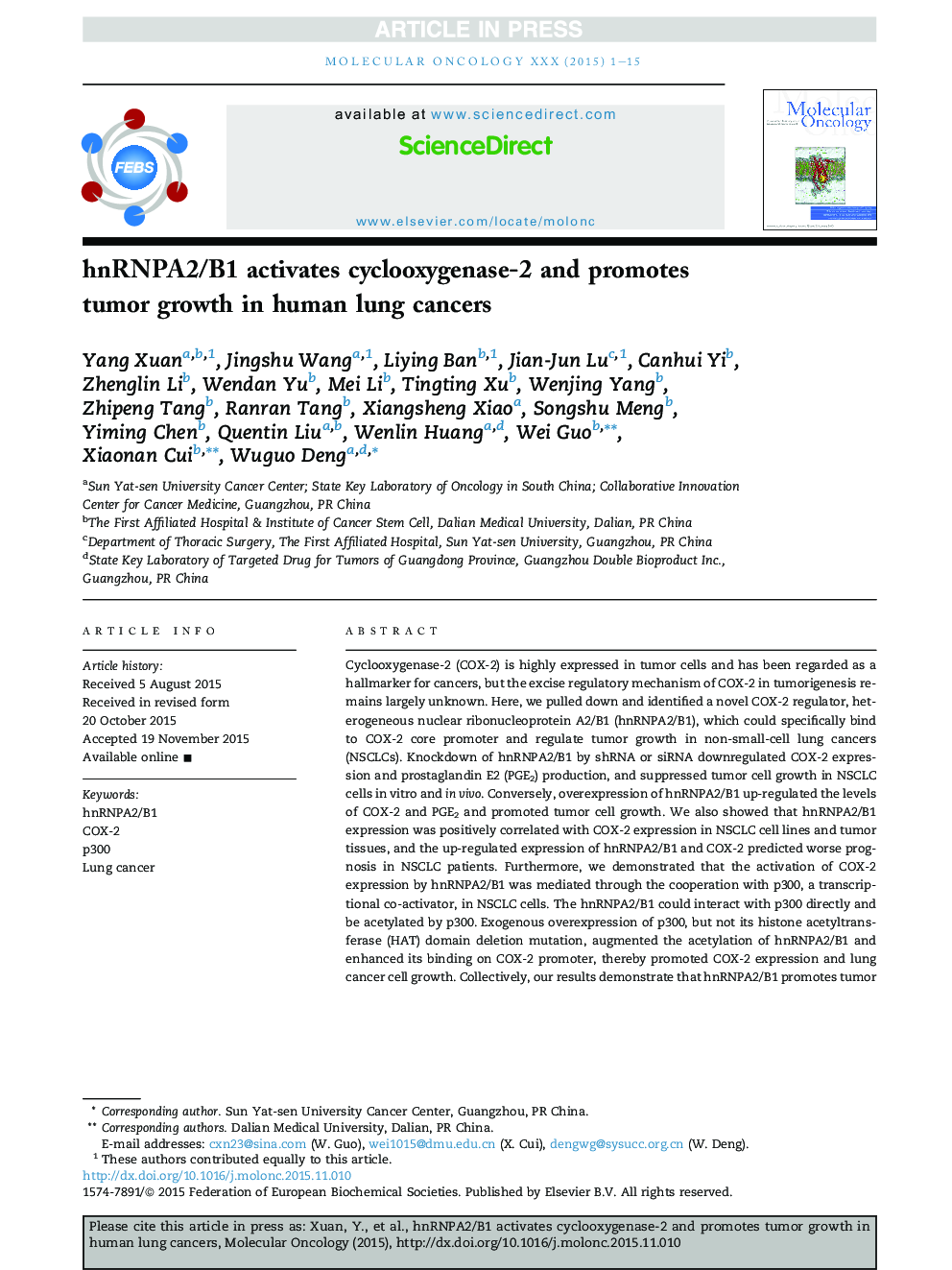| Article ID | Journal | Published Year | Pages | File Type |
|---|---|---|---|---|
| 10914567 | Molecular Oncology | 2016 | 15 Pages |
Abstract
Cyclooxygenase-2 (COX-2) is highly expressed in tumor cells and has been regarded as a hallmarker for cancers, but the excise regulatory mechanism of COX-2 in tumorigenesis remains largely unknown. Here, we pulled down and identified a novel COX-2 regulator, heterogeneous nuclear ribonucleoprotein A2/B1 (hnRNPA2/B1), which could specifically bind to COX-2 core promoter and regulate tumor growth in non-small-cell lung cancers (NSCLCs). Knockdown of hnRNPA2/B1 by shRNA or siRNA downregulated COX-2 expression and prostaglandin E2 (PGE2) production, and suppressed tumor cell growth in NSCLC cells in vitro and in vivo. Conversely, overexpression of hnRNPA2/B1 up-regulated the levels of COX-2 and PGE2 and promoted tumor cell growth. We also showed that hnRNPA2/B1 expression was positively correlated with COX-2 expression in NSCLC cell lines and tumor tissues, and the up-regulated expression of hnRNPA2/B1 and COX-2 predicted worse prognosis in NSCLC patients. Furthermore, we demonstrated that the activation of COX-2 expression by hnRNPA2/B1 was mediated through the cooperation with p300, a transcriptional co-activator, in NSCLC cells. The hnRNPA2/B1 could interact with p300 directly and be acetylated by p300. Exogenous overexpression of p300, but not its histone acetyltransferase (HAT) domain deletion mutation, augmented the acetylation of hnRNPA2/B1 and enhanced its binding on COX-2 promoter, thereby promoted COX-2 expression and lung cancer cell growth. Collectively, our results demonstrate that hnRNPA2/B1 promotes tumor cell growth by activating COX-2 signaling in NSCLC cells and imply that the hnRNPA2/B1/COX-2 pathway may be a potential therapeutic target for human lung cancers.
Keywords
Related Topics
Life Sciences
Biochemistry, Genetics and Molecular Biology
Cancer Research
Authors
Yang Xuan, Jingshu Wang, Liying Ban, Jian-Jun Lu, Canhui Yi, Zhenglin Li, Wendan Yu, Mei Li, Tingting Xu, Wenjing Yang, Zhipeng Tang, Ranran Tang, Xiangsheng Xiao, Songshu Meng, Yiming Chen, Quentin Liu, Wenlin Huang, Wei Guo, Wuguo Deng,
